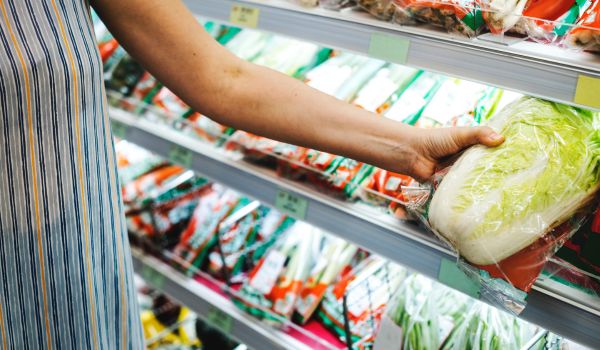THE TWO APPROACHES
The two common approaches used in supermarket refrigeration differ in a lot of aspects. The amount of refrigerant used marks one of the major criteria for the difference between the two. The older direct expansion uses almost double refrigerant when compared to the secondary loop approach. Due to this difference, along with the environmental concerns and regulatory practices use of the secondary loop technique in supermarket refrigeration has increased.
DIRECT EXPANSION DX SYSTEM OPERATION:
Compressors, condensers, expansion valves and evaporators are the four main basic components of the traditional DX system of the supermarket refrigeration system. The refrigerant changes state back and forth in this system from liquid to gas. The change of state initially occurs at the evaporators in the display cases and other fixtures connected to the system. The refrigerant absorbs the heat and results in a pressure change that causes the compressors to begin pulling refrigerant vapour from the suction lines. The temperature difference results in the vapour state of the refrigerant. This start of the process is referred to as the system calls for refrigeration.
As a high-pressure superheated vapour, the refrigerant flows into the condenser. Cooler air passes and changes the state of the refrigerant into a saturated mixture of liquid and vapour. From the condenser, the refrigerant moves into a receiver, which works as a reservoir. From this reservoir, the liquid refrigerant flows into an expansion valve that meters the flow of refrigerant from the high-pressure, high-temperature side of the system to the low-pressure, lower-temperature side.
The refrigerant then returns to the evaporator, where the process begins. Here, the liquid refrigerant absorbs heat and changes state back into a vapour. Once the refrigerant completely vapours, the additional heat from the evaporator superheats the refrigerant. These superheated vapours return to the compressors as the process starts over, and the system calls for refrigeration.
SECONDARY LOOP SN SYSTEM OPERATION:
No change of state occurs in this secondary loop system of the supermarket refrigeration system. The coolant uses glycol fluid and absorbs heat through the secondary heat exchangers, which raises its temperature but does not cause it to boil.
This SN system is composed of two sub-systems: the primary DX side and the secondary SN side. The secondary system adds to the process by incorporating a fluid-circulating process. The secondary coolant does not change its state but absorbs heat. Heat absorbed by the coolant is transferred to the primary side of the system and serves as the evaporator for the DX side.
A closed-loop fluid piping system is used to connect the heat exchangers in the system. The primary side determines the temperature of the fluid. The overall flow rate for the system is determined by the size and number of pumps that are running. By the use of variable speed drives the pumps can be controlled more efficiently.
THE NEW TECHNOLOGIES
Today, a host of new technologies have emerged with the above two systems for supermarket refrigeration in the market. The new techniques are based on a small charge of refrigerant cools such as glycol and subcritical carbon dioxide systems. And the changing refrigerants: HFCs are on their way out, and naturals, hydrocarbons (HCs), and HFOs are on their way in. More than one of these system architecture types can be used within the same supermarket refrigeration system.
THE CURRENT TREND
Today, the most commonly used refrigeration for supermarkets is the multiplex direct expansion system. Control systems for condensers are nowadays being offered by many refrigeration system manufacturers that limit the refrigerant charge needed for the operation of multiplex refrigeration. It is one of the latest trends in the market of refrigeration.
EVOLVING REQUIREMENTS OF CUSTOMERS
Earlier, customers were more concerned about the energy efficiency of supermarket refrigerators. Today’s advance customers choose a supermarket refrigeration system not only on the basis of energy efficiency and heat produced in the process but many different things they’re trying to optimize from it. Environmental or sustainability goals have also come in their priority list along with energy efficiency in choosing the supermarket refrigeration system as the concerns for the environment have increased the customer checks and compares various attributes related to environmental issues that are able to clear all the environmental and sustainability parameters.
